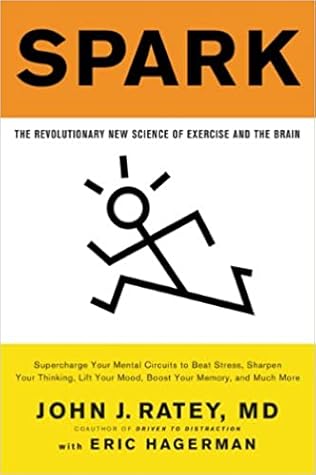More on this book
Community
Kindle Notes & Highlights
Read between
February 4 - February 6, 2020
Although heart disease, cancer, stroke, and diabetes are the
leading causes of death for Americans over age sixty-five, many of them live in fear of falling and breaking their brittle bones.
About 20 percent of older adults who break a hip die within a year.
When her body slowed down, her mind followed suit: she stopped playing bridge and started watching soap operas.
She was slipping mentally, but didn’t have dementia yet—she knew perfectly well who I was, but she had less and less to say during our conversations.
She lost her grip on the boundaries between what was real and what was not. The soap opera characters became part of her life, and she talked to them as if they were right there in the room. She died of natural causes at eighty-eight.
we also came of age with Kenneth Cooper’s revolutionary concept of aerobics.
we recognize how a healthy heart and healthy lungs stave off disease, and we know our way around the gym.
when people come to recognize how their lifestyle can improve their health span—living better, not simply longer—they will, at the very least, be more inclined to stay active.
Here’s how exercise keeps you going:
1. It strengthens the cardiovascular system.
strong heart and lungs reduce resting b...
This highlight has been truncated due to consecutive passage length restrictions.
2. It regulates fuel.
those with high glucose levels were 77 percent more likely to develop Alzheimer’s.
3. It reduces obesity.
body fat has its own nasty effects on the brain.
over sixty-five are overweight, and, given the potential problems obesity can lead to—from cardiovascular disease to diabetes—the agenc...
This highlight has been truncated due to consecutive passage length restrictions.
4. It elevates your stress threshold.
combats the corrosive effects of too much cortisol,
5. It lifts your mood.
More neurotransmitters, neurotrophins, and
connectivity shore up the hippocampus against the atrophy associated with ...
This highlight has been truncated due to consecutive passage length restrictions.
6. It boosts the immune system.
Stress and age depress the immune response, and exercise strengthens it directly in two important ways.
even moderate activity levels rally the immune system’s antibodies and lymphocytes, which yo...
This highlight has been truncated due to consecutive passage length restrictions.
part of the immune system’s job is to activate cells that fix damaged tissue.
7. It fortifies your bones.
you need a strong carriage to continue exercising as you age, and it is a largely preventable disease.
More women every year die from hip fractures—a vulnerability of osteoporosis—than from breast cancer.
8. It boosts motivation.
The road to successful aging really begins with desire, because without the desire to stay engaged and active and alive, people quickly fall into the death trap of being sedentary and solitary.
with exercise we can continually improve and ...
This highlight has been truncated due to consecutive passage length restrictions.
9. It fosters neuroplasticity.
The best way to guard against neurodegenerative diseases is to build a strong brain.
keep challenging your mind.
study after study shows that the more education you have, the more likely you are to hang onto your cognitive abilities and stave off dementia.
Volunteering is beneficial because it involves social contact, which is inherently challenging for the brain. Anything that keeps you in contact with other people helps you live better and longer—statistics show a tight inverse relationship between sociability and mortality.
Snowdon points to the notion of
cognitive reserve
as a possible explanation. This is the brain’s ability to adapt and compensate for damage by recruiting o...
This highlight has been truncated due to consecutive passage length restrictions.
I want nothing less than to get you hooked.
The point I’ve tried to make—that exercise is the single most powerful tool you have to optimize your brain function—is based on evidence I’ve gathered from hundreds and hundreds of research papers, most of them published only within the past decade.
how much exercise is necessary. “Is it one hour a week? Is it every morning? Is it only a grueling marathon regimen that maximizes neurogenesis?”
Now by having this tool that can measure neurogenesis indirectly, we can actually try to optimize an exercise regimen.”
And he’s pretty confident that it’s important to include complex motor movements (such as aerobic dance or martial arts) in your routine. But he can’t give specific recommendations just yet.
there are certain conclusions we can draw from the work they’ve already done.
there is instructive evidence from other fields.
Research from kinesiologists to epidemiologists shows again and again that the better your fitness level...
This highlight has been truncated due to consecutive passage length restrictions.
getting in shape increases brain volume of older adults;
the best advice is to get fit and then continue challenging themselves.


